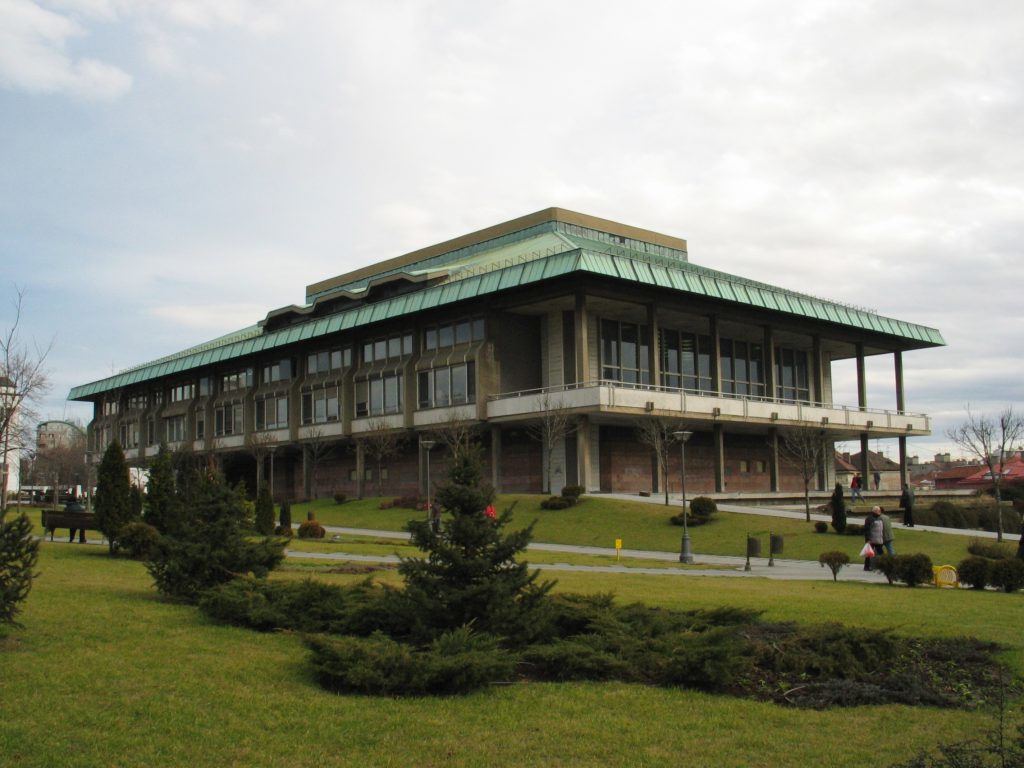The Early Book Collection contains the Library’s oldest and most significant materials. Some of them date back to the library’s inception and were collected by notable Serbian librarians, such as Đuro Daničić and Stojan Novaković. During the First World War, a substantial number of books was lost. The Collection was partially restored afterwards only to be completely destroyed once again on the very first day of Serbia’s involvement in World War II. Currently, the collection contains approximately 5,886 titles, totalling around 15,000 volumes.
In 1973, Dušica Stošić and her team curated the Catalogue of Books in the Languages of the Yugoslav Peoples from 1519 to 1867. This catalogue stands as a valuable resource, showcasing a substantial section of the Early Book Collection, encompassing around 3,044 bibliographic units.
The Early Book Collection comprises both domestic and foreign early printed books and annual publications like yearbooks, almanacs and calendars. A fresh conceptual approach aims to provide a clearer profile for this collection. Its boundaries have been defined by the current Law on Early and Rare Library Materials. This collection’s timeframe is based on specific national criteria: the beginning year for the Serbian language and culture is set at 1638 (anything before this date is housed in the Archaeography Department), while the ending year is 1867, marking the official introduction of Vuk’s language reform (for Croatian and Slovenian, it’s 1835; for Romanian, it’s 1830; for Russian and Hungarian, it’s 1800; for Bulgarian, it’s 1878; and for Western European languages, it’s 1700).
Tasks involving the collection span uncovering, gathering, safeguarding, preserving, utilising, researching and appraising resources; organising and keeping records; processing materials and crafting catalogues; and protecting, microfilming, digitising, conserving and restoring the materials.
Although the collection is primarily based on religious, particularly Christian literature, it also houses works of distinguished figures of Serbian culture such as Jovan Rajić, Lukiјan Mušicki, Zahariјe Orfelin, Dositej Obradović, Platon Atanacković, Vuk Karadžić, Đura Daničić, Petar II Petrović Njegoš, S. S. Saraјliјa, Branko Radičević, Sterija, J. J. Zmaj, etc. It also contains the first primers, readers and textbooks, as well as early Serbian constitutions and laws. World literature luminaries are represented through their translated works, including those of Homer, Cicero, Virgil, Horace, Ovid, Cervantes, Byron, Hugo, Goethe and Gogol.
The collection also contains printed books in foreign languages, from post-incunabula onwards (there are over 120 books from the 16th century alone). The oldest is the history of Shkodër from 1504, titled De obsidione Scodrensi by Marinus Barletius. If we don’t count Croatian books within the collection, the most prevalent language among the foreign books is undoubtedly Latin, followed by Russian. To a lesser extent, there are also books in Italian, French, German, Hungarian, Bulgarian, Romanian, Ancient Greek, Slovenian and Czech.
The shelf mark for the Early Book Collection starts with “S“.

